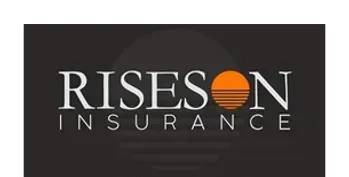
Home’s Location & Condition Shape the Cost of AZ Home Insurance
June 17, 2025 | Insurance
Owning a house is already a big investment—protecting it with the right home insurance shouldn’t feel like a puzzle. Yet two factors can swing your premium up or down more than almost anything else: where the property sits and what shape it’s in. Below, we break down how insurers evaluate both, why rates differ between neighborhoods, and what you can do to keep coverage affordable.
Insurers pore over decades of loss data to pinpoint pockets of higher or lower risk. Here’s what they’re looking at:
Crime statistics: Higher burglary or vandalism rates trigger higher theft-coverage premiums. Proximity to a fire station & hydrants: The closer you are, the faster first responders arrive—translating to lower fire-related rates. Weather patterns: Areas prone to microbursts, monsoons , or flash floods often carry wind & water surcharges. Wildfire & flood zones: FEMA flood maps and state wildfire models can require separate endorsements —or even a stand-alone policy.
Underwriters lean heavily on the four-point inspection ( roof , plumbing , electrical, HVAC ) before quoting. Red flags add dollars; up-to-date systems unlock credits.
Roof age & material – A composite-shingle roof over 20 years old can double the wind/hail portion of your premium. Plumbing – Polybutylene or galvanized pipes equal higher leak risk. Re-piping can shave off surcharges. Electrical – Old fuse boxes or aluminum wiring may require costly endorsements—or full replacement—before a policy is issued. HVAC & water heater – Modern, energy-efficient units cut both utility bills and the chance of fire or water damage.
Upgrade smart: Replace aging roofs and plumbing first—those have the biggest impact. Mitigate hazards: Clear debris to create defensible space in wildfire zones and install French drains in low-lying lots. Bundle wisely: Pair your auto or umbrella to unlock multi-policy discounts. Ask about sensors: Many insurers discount smart-home water-leak or security systems. Review annually : Property values and risk maps change; so should your coverage levels.
Home insurance isn’t one-size-fits-all—especially across rapidly growing areas like Phoenix , Scottsdale , Tucson , Gilbert , and Chandler. Premiums can shift after just a single zip-code revision or flood-map update, so working with an agent who understands every local wrinkle is invaluable.
Reach out to Riseson Insurance in Tempe to get a quote tailored to your home’s exact location and condition. Call us at 602-460-5470 today, and let’s make sure your most important asset is protected the way it deserves.
1. Location: Why Your ZIP Code Speaks Volumes
2. Condition: The Fine Print Hidden in Your Home Inspection
3. Quick Wins to Lower Your Premium
4. Local Insight Matters More Than Ever
Ready for Personalized Advice?
- Crime statistics: Higher burglary or vandalism rates trigger higher theft-coverage premiums.
- Proximity to a fire station & hydrants: The closer you are, the faster first responders arrive—translating to lower fire-related rates.
- Weather patterns: Areas prone to microbursts, monsoons , or flash floods often carry wind & water surcharges.
- Wildfire & flood zones: FEMA flood maps and state wildfire models can require separate endorsements —or even a stand-alone policy.
- Roof age & material – A composite-shingle roof over 20 years old can double the wind/hail portion of your premium.
- Plumbing – Polybutylene or galvanized pipes equal higher leak risk. Re-piping can shave off surcharges.
- Electrical – Old fuse boxes or aluminum wiring may require costly endorsements—or full replacement—before a policy is issued.
- HVAC & water heater – Modern, energy-efficient units cut both utility bills and the chance of fire or water damage.
- Upgrade smart: Replace aging roofs and plumbing first—those have the biggest impact.
- Mitigate hazards: Clear debris to create defensible space in wildfire zones and install French drains in low-lying lots.
- Bundle wisely: Pair your auto or umbrella to unlock multi-policy discounts.
- Ask about sensors: Many insurers discount smart-home water-leak or security systems.
- Review annually : Property values and risk maps change; so should your coverage levels.
